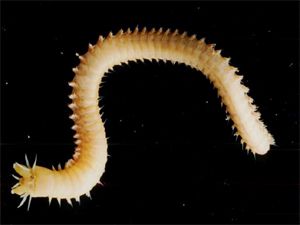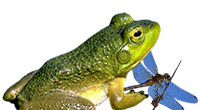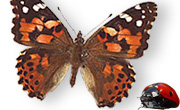 The Common clam worm (Nereis succinea) is a widely distributed polychaete worm. It is often referred to as a ragworm or sandworm, or simply as the "clam worm", but these terms can all refer to any one of a number of other species of the genus Nereis (or indeed to other polychaetes). The name "common clam worm" is less ambiguous, but is also sometimes used for other Neries species such as N. virens.
The common clam worm can reach up to 15cm in length, but most specimens are smaller than this. It is brown coloured at the rear, and reddish-brown on the rest of its body. It has an identifiable head with four eyes, two sensory feelers or palps, and eight tentacles.
It is a freeswimming polychaete, scavenging on the bottom of shallow marine waters. It feeds on other worms and algae. To feed, it uses a proboscis, which has two hooks at the end, to grasp prey and draw it into its mouth. Clamworms are an important food source for bottom-feeding fish and crustaceans, though they can protect themselves by secreting a mucus substance that hardens to form a sheath around them.
During lunar phases in the spring and early summer, the clam worm undergoes "heteronenesis". Their parapodia enlarge so they can swim. The clamworms are then capable of releasing eggs and sperm. After they have released their egg or sperm, they die.
Planktonic larvae develop, grow into annelids and eventually sink to the bottom of the water. |





